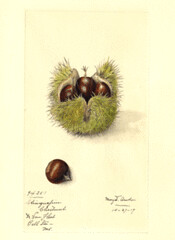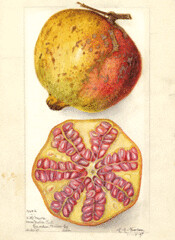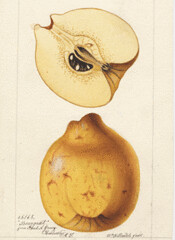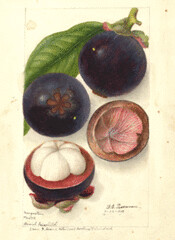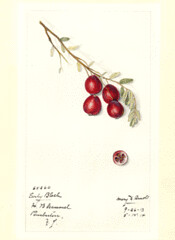More old tree stuff.
Before I posted the article on medlars and apparently became the source of all knowledge on that particular species, the article most Google-searchers seemed to be gravitating towards was the one on the Endicott Pear, America's oldest fruit tree. In that vein, and since I've already established that I'm counting chestnuts as fruit, I thought I'd point you folks to these nifty illustrations of ancient (350+ years old) Spanish Chestnut (Castanea sativa) trees growing in the estate of Croft Castle, near Leominster, U.K. They call Phytophthora a virus, rather than a fungus, but we'll forgive them. The artist is eighty, after all.
That page is part of a bigger ATF (Ancient Tree Forum) page, hosted by the U.K.'s Woodland Trust. Though very little of it has anything to do with fruit, there are a number of very old, very impressive trees on display there, and a lot of good information on the how's and why's of preserving them (the website is very much focused on the U.K., though there are links to organizations in other countries). It never fails to amaze me how a tree, something which has aboslutely no way to avoid anything in its environment, can still adjust and survive for hundreds of years, molded and changed by its experiences.
The other fruit angle on this whole Ancient Tree site is that they are selling wine from Comte Cathare to support their preservation efforts. I'm a big fan of wine and grapes, and it's a good cause, but they lose points by buying into the whole biodynamics thing, which is a big load of nonsense, in my humble opinion. Never underestimate the ability of human beings to take a few vaguely good ideas and then build out from them to create a whole bunch of crap. Ah well. I'll save that rant for another day.
By the way, I'm back from vacation.
Labels: castanea, chestnut, European Chestnut, nuts



